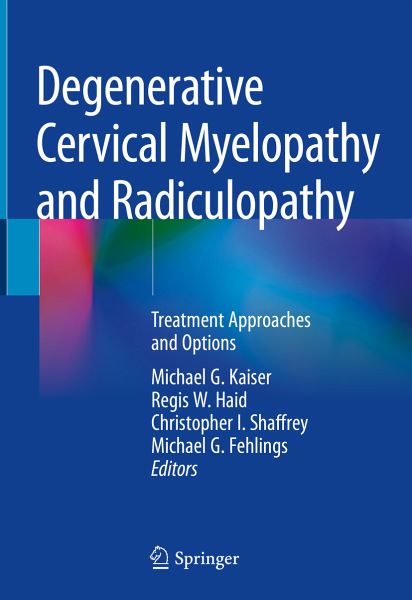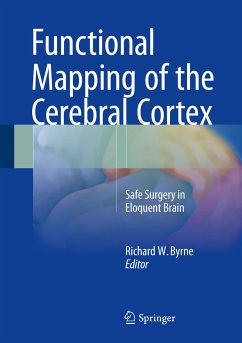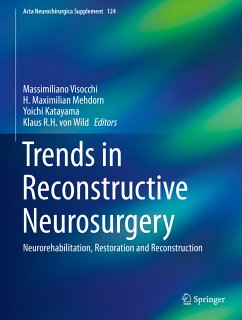
Degenerative Cervical Myelopathy and Radiculopathy (eBook, PDF)
Treatment Approaches and Options
Redaktion: Kaiser, Michael G.; Fehlings, Michael G.; Shaffrey, Christopher I.; Haid, Regis W.
Versandkostenfrei!
Sofort per Download lieferbar
88,95 €
inkl. MwSt.
Weitere Ausgaben:

PAYBACK Punkte
44 °P sammeln!
Degenerative disorders of the cervical spine are among the more common reasons why patients seek medical attention or consult with a spine specialist. These conditions can lead to neck pain and/or neurological deficit that can significantly compromise an individual's quality of life. Despite the regularity of these conditions, there remains both uncertainty and controversy regarding optimal management. No standard of care exists, however there are nuances related to a patients history, clinical presentation, and imaging that may make one approach more conducive to clinical success. This text ...
Degenerative disorders of the cervical spine are among the more common reasons why patients seek medical attention or consult with a spine specialist. These conditions can lead to neck pain and/or neurological deficit that can significantly compromise an individual's quality of life. Despite the regularity of these conditions, there remains both uncertainty and controversy regarding optimal management. No standard of care exists, however there are nuances related to a patients history, clinical presentation, and imaging that may make one approach more conducive to clinical success.
This text is intended to serve as a comprehensive, up-to-date resource for clinicians involved in the management of patients with cervical degenerative disease. The text is divided into sections, organized in a clinically strategic manner. The initial chapters address the basics of cervical spine anatomy and biomechanics as well as the pathophysiologyleading to various cervical degenerative disorders and the possible neurological sequelae. Subsequent chapters outline characteristics of the clinical presentation and the various diagnostic modalities to evaluate these patients. Key elements involved in the surgical-decision making process are covered, providing the necessary elements to establish a solid foundation for treatment planning. The final sections discusses specific procedures; including traditional approaches as well as more recent developments such as motion preservation surgery and minimally invasive techniques. The last section focuses on challenging clinical scenarios that require advanced surgical consideration. Individual chapters are organized with an introductory outline containing key chapter elements. Chapters focusing on specific pathological entities include discussions regarding pathophysiology, genetics, and risk factors. Those describing surgical procedures includea discussion on indications/contraindications, pre-operative planning, surgical technique, post-operative care, and complication avoidance. Chapter authors present their personal experience enhancing the information from current, evidence-based, referenced material. When appropriate, case presentations are added to provide a practical application of chapter's key points.
This text, based on relevant, up-to-date clinical information and the cumulative experience of current spine experts, offers physicians the necessary tools involved in the decision-making process to formulate the optimal treatment plan for an individual patient. In addition, identification of knowledge gaps will hopefully stimulate future research and the evolution of cervical spondylotic treatments.
Dieser Download kann aus rechtlichen Gründen nur mit Rechnungsadresse in A, B, BG, CY, CZ, D, DK, EW, E, FIN, F, GR, HR, H, IRL, I, LT, L, LR, M, NL, PL, P, R, S, SLO, SK ausgeliefert werden.
Alle Preise in Euro und inkl. der gesetzl. MwSt. | Innerhalb Deutschlands liefern wir preisgebundene Bücher versandkostenfrei. Weitere Informationen: bitte hier klicken
Support
Bitte wähle dein Anliegen aus:
Rechnungen
Bestellstatus
Retourenschein
Storno












